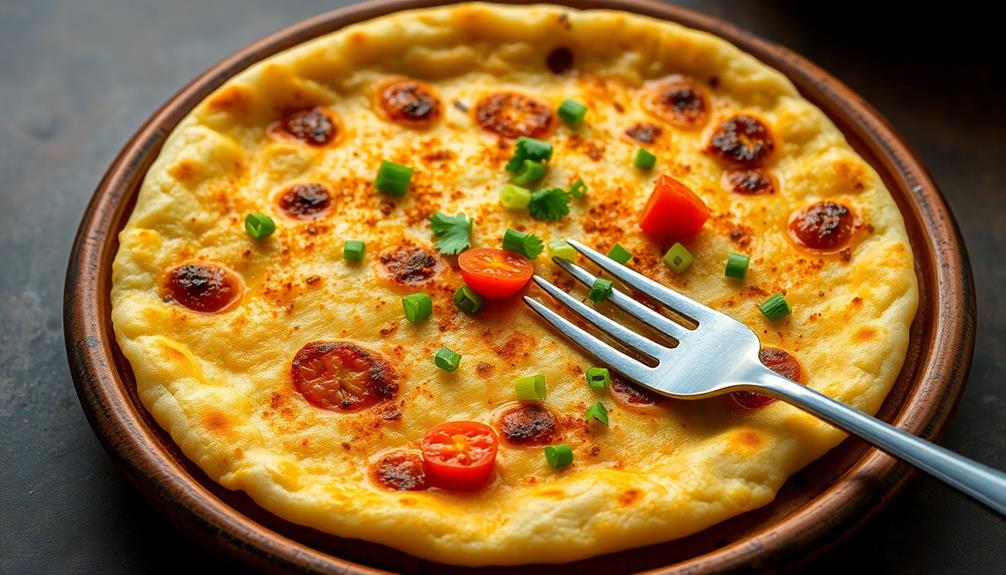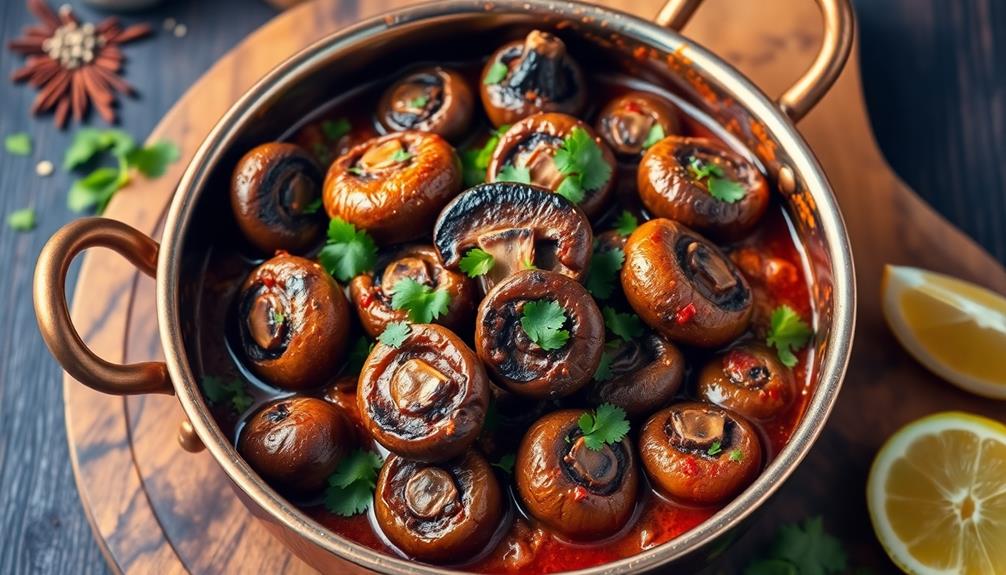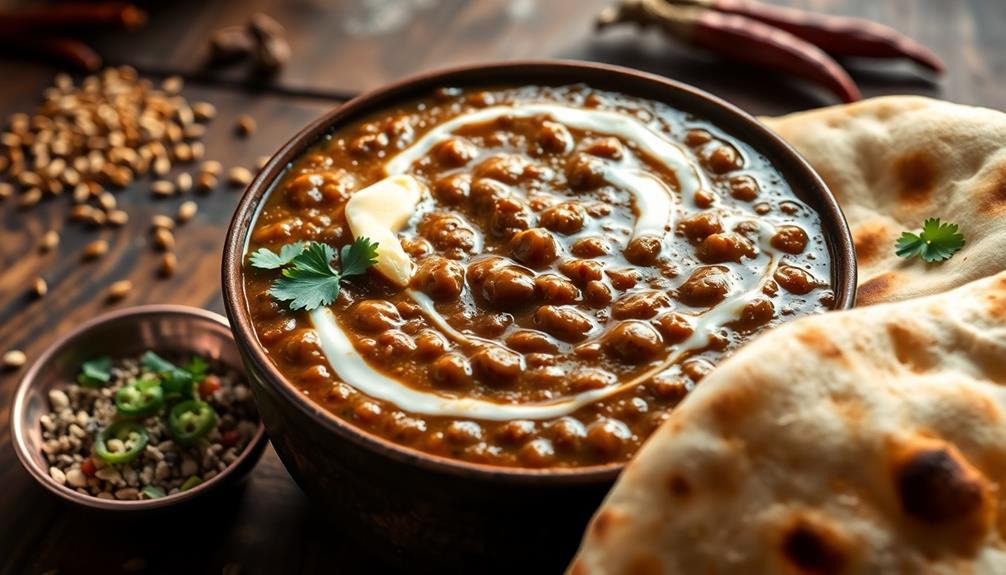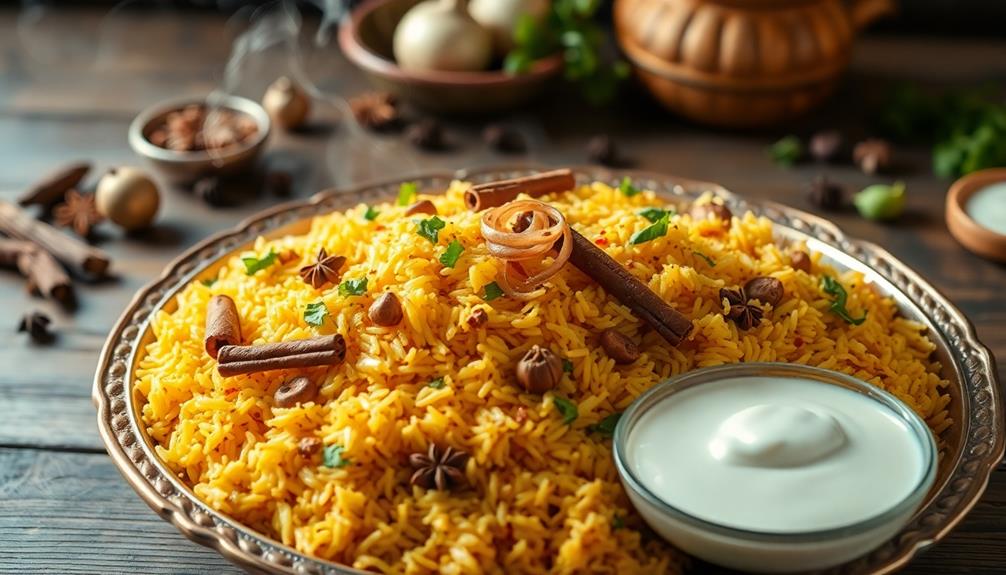Uttapam is a thick, savory pancake that's been a beloved staple in Tamil Nadu, India, for centuries. You'll make it from a fermented batter of rice and lentils, seasoned with aromatic spices. Top it with your favorite veggies for a truly customizable meal. The fermentation adds a wonderful tangy flavor and light texture. Serve it hot with chutneys or sambar for an extra flavor boost. Uttapam is a unifying dish that brings families and communities together – and if you keep reading, you'll discover the history and detailed steps to make this delicious pancake at home.
Key Takeaways
- Uttapam is a thick, savory pancake that originated in Tamil Nadu, India, and has been a staple dish for centuries in the local cuisine.
- The recipe for uttapam involves a fermented batter made from a mixture of rice, lentils, and fenugreek seeds, giving it a slightly sour and tangy flavor.
- Uttapam can be customized with a variety of toppings, including vegetables and spices, to suit different taste preferences and regional variations.
- Cooking uttapam involves pouring the batter onto a hot, greased griddle, allowing it to cook until set, and then flipping it to cook the other side.
- Uttapam is often served hot, accompanied by chutneys or sambar, and is considered a unifying dish that brings families and communities together.
History
Uttapam's origins can be traced back to the southern Indian state of Tamil Nadu, where it has been a staple dish for centuries. This thick, savory pancake has been a beloved part of the local cuisine, and its history is as rich and flavorful as the dish itself.
Over time, the recipe has evolved, with different regions putting their own unique spin on the dish. You'll find variations that incorporate a variety of toppings, from aromatic spices to fresh vegetables, each one offering a delightful burst of flavor.
As you explore the history of uttapam, you'll discover how this simple yet satisfying dish has become an integral part of South Indian culinary traditions, bringing families and communities together around the table. The origins of uttapam can be traced back to ancient Tamil Nadu, where it was traditionally made with fermented rice and lentil batter. Over time, different regions of South India have put their own unique spin on the dish, incorporating various toppings such as onions, tomatoes, and chilies. As the popularity of uttapam continues to grow, it has also inspired numerous variations and fusion dishes, such as the innovative gobi manchurian recipe that combines Indian and Chinese flavors.
Recipe
Uttapam is a popular south Indian savory pancake that's versatile, filling, and delicious. It's made from a fermented batter of rice and lentils, and can be topped with various ingredients to create a flavorful and satisfying meal.
The batter for Uttapam is typically prepared by soaking rice and lentils, then blending them into a smooth batter. This batter is then allowed to ferment, which gives it a slightly sour and tangy flavor. The fermentation process also helps to make the Uttapam light and fluffy.
- 1 cup rice
- 1/4 cup urad dal (split and skinned black lentils)
- 1 teaspoon fenugreek seeds
- Salt to taste
To prepare the Uttapam, the fermented batter is ladled onto a hot griddle or tawa, and the desired toppings are sprinkled on top. The Uttapam is then cooked until the bottom is golden brown and crispy, and the top is set. Uttapam can be served hot, garnished with fresh coriander leaves, and accompanied by a variety of chutneys or sambar.
When cooking Uttapam, it's important to ensure that the batter has been properly fermented, as this will affect the texture and flavor of the finished dish. Additionally, the temperature of the griddle or tawa should be maintained at the right level to ensure even cooking and a crispy texture.
Cooking Steps
First, mix the batter thoroughly to ensure a smooth texture.
Next, add the cooked vegetables of your choice to the batter.
Then, pour the batter onto a hot pan and let it cook until it's set, before flipping and cooking it until it's golden brown.
Step 1. Mix Batter Thoroughly
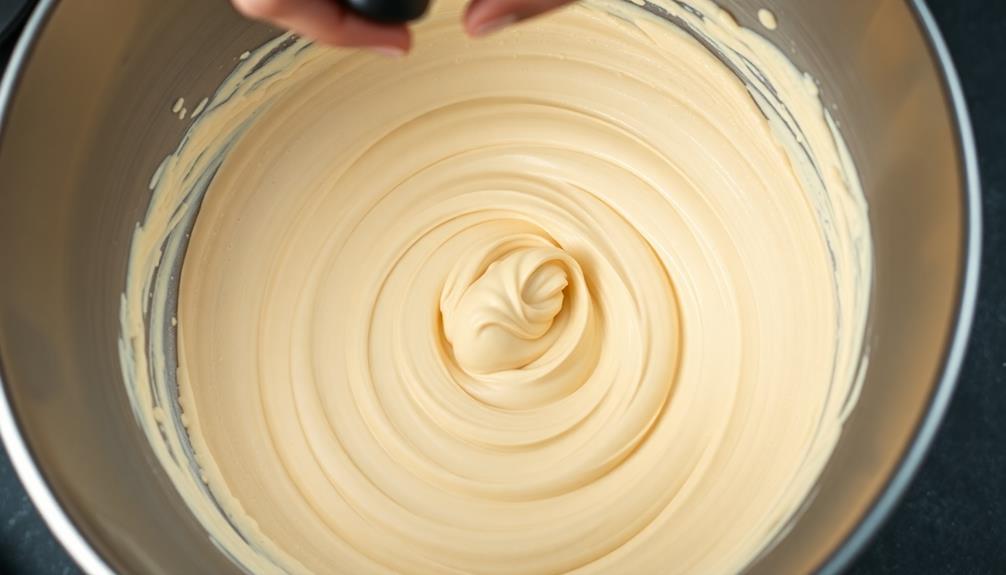
After preparing the ingredients, it's crucial to mix the batter thoroughly. This step ensures that all the components blend together seamlessly, creating a smooth and consistent texture for your uttapam.
Start by grabbing a large mixing bowl and pouring in the prepared rice and lentil mixture. Using a sturdy whisk or wooden spoon, begin to stir the batter vigorously, making sure to incorporate every nook and cranny.
Whisk with confidence, moving the utensil in circular motions to thoroughly incorporate all the ingredients. Don't be afraid to put some muscle into it! The batter should have a slightly thick, yet pourable consistency when you're done.
If it seems too thick, add a bit of water and continue mixing until you reach the desired texture. Remember, a well-mixed batter is the foundation for perfectly cooked, fluffy uttapam.
Step 2. Add Cooked Vegetables

Once the batter is thoroughly mixed, you can proceed to add your desired cooked vegetables. This is where you get to unleash your creativity and tailor the uttapam to your personal preferences!
Perhaps you're craving a savory combination of sautéed onions, bell peppers, and tomatoes. Or maybe you're in the mood for a vibrant mix of leafy greens and zucchini. The key is to ensure your veggies are cooked through and seasoned to your liking before incorporating them into the batter.
Gently fold the cooked vegetables into the batter, taking care not to overmix. You want the veggies to be evenly distributed throughout, creating a delightful texture and flavor in each bite.
Once your veggie-filled batter is ready, you can start ladling it onto a hot, greased griddle or skillet. Use the back of a spoon to gently spread the batter into a circular shape, allowing the uttapam to cook until the edges are crisp and golden brown.
Flip, and cook the other side until it too is lightly charred. Serve your homemade uttapam hot, garnished with fresh chutneys or raita for a truly satisfying meal.
Step 3. Pour Batter Onto Hot Pan
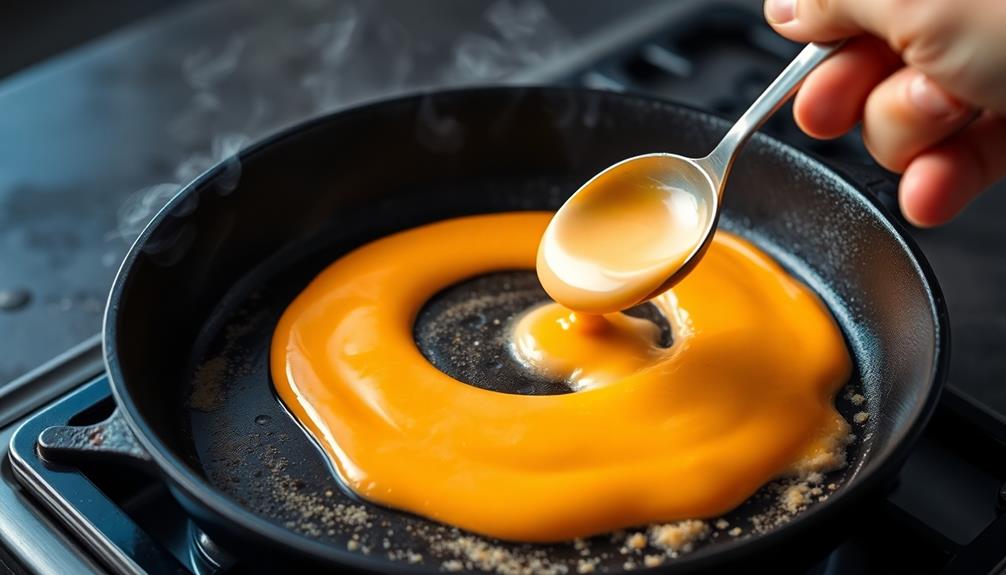
With the batter ready and the vegetables incorporated, you can now start pouring the mixture onto a hot, well-greased griddle or skillet.
Use a ladle or spoon to scoop up a portion of the batter and gently pour it onto the center of the pan. Let the batter spread out naturally, creating a round, even shape.
As the uttapam cooks, you'll notice small bubbles forming on the surface. This is a good sign that it's time to flip the uttapam over.
Carefully slide a spatula underneath and flip the uttapam over. Cook the other side for a minute or two until it's golden brown and cooked through.
Remember to keep the heat at medium to ensure the uttapam cooks evenly without burning. Once both sides are nicely browned, you can transfer the uttapam to a plate and repeat the process with the remaining batter.
Enjoy your freshly made, delicious uttapams!
Step 4. Cook Until Set
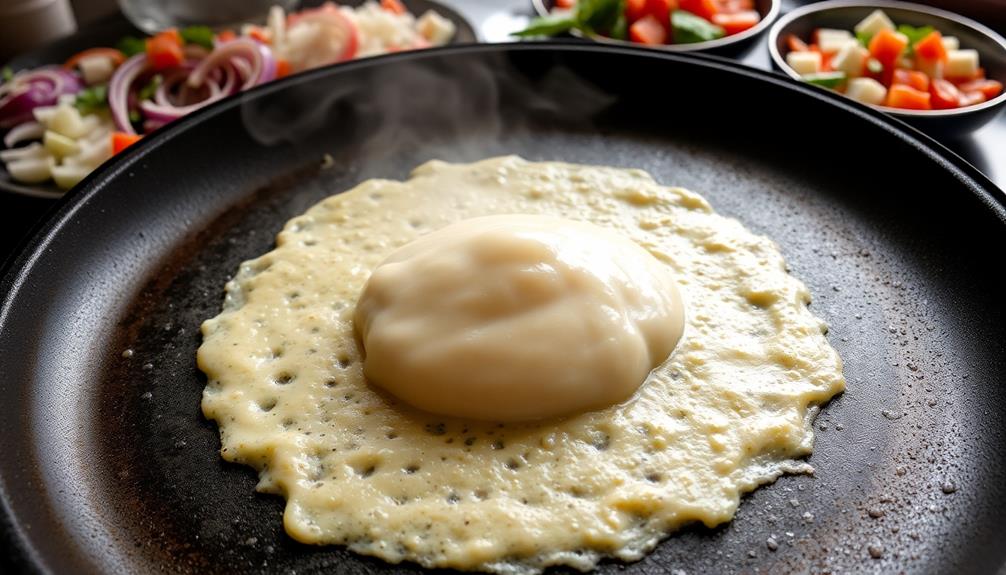
As the uttapam cooks, you'll notice small bubbles forming on the surface. This is a good sign! It means the batter is setting and the uttapam is ready to flip.
Gently slide a spatula under the uttapam and flip it over. You'll see the underside has turned a lovely golden-brown color.
Now, let the uttapam cook on the other side. Keep an eye on it, and when the edges start to look dry and crisp, it's ready!
Use the spatula to slide the uttapam onto a plate. Repeat this process with the remaining batter, adding more oil or ghee to the pan as needed to prevent sticking.
Once all the uttapams are cooked, you can top them with your favorite chutneys, pickles, or other savory garnishes.
Enjoy your homemade uttapams while they're hot and crispy!
Step 5. Flip and Cook Until Golden
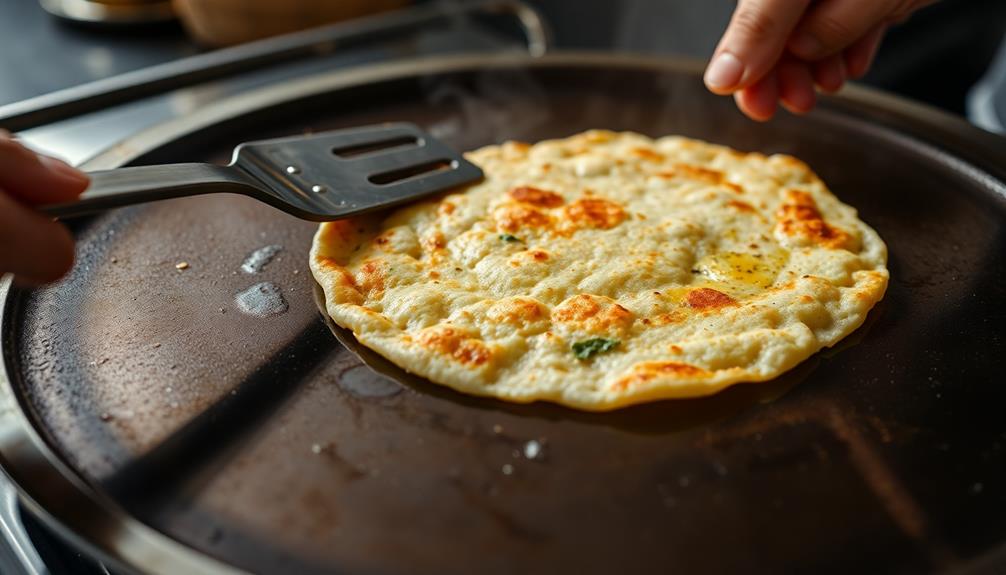
You'll flip the uttapam over gently with a spatula once small bubbles have formed on the surface.
Carefully slide the spatula under the uttapam, making sure to get it all the way around the edges. With a smooth, quick motion, flip the uttapam over to the other side.
The uncooked side should now be facing up, and you'll notice it's starting to turn a lovely golden-brown color. Let the uttapam cook for another 2-3 minutes, keeping a close eye on it.
You want it to get evenly browned and crispy on this second side. Once the uttapam is cooked through and nicely golden, use the spatula to transfer it to a plate.
Repeat this process with the remaining batter, flipping and cooking each uttapam until they're all perfectly browned and ready to serve. Enjoy your delicious homemade uttapams!
Final Thoughts
Ultimately, uttapam is a beloved South Indian dish that showcases the versatility of fermented rice and lentil batters. You can top it with an endless array of ingredients, making it a fantastic canvas for your culinary creativity.
Whether you prefer savory or sweet, there's an uttapam out there to suit your taste buds.
Don't be intimidated by the slightly longer prep time – the end result is well worth it! The fluffy, spongy texture and flavor-packed toppings make for a truly satisfying meal.
Plus, you can get the whole family involved in the cooking process, making it a fun and interactive activity.
Frequently Asked Questions
Is Uttapam the Same as Dosa?
No, uttapam and dosa aren't the same thing!
While they're both delicious South Indian dishes, they've some key differences.
Dosas are thin, crispy crepes made from fermented rice and lentil batter.
Uttapam, on the other hand, is a thicker pancake made from the same batter, but with toppings like veggies, herbs, or cheese cooked right into the batter.
So while they're cousins in the South Indian food family, uttapam and dosa are distinct dishes with their own unique flavors and textures.
Enjoy exploring the differences between these tasty treats!
Can Uttapam Be Made in Advance?
Yes, you can definitely make uttapam in advance! It's a versatile dish that holds up really well.
Just prepare the batter ahead of time, then when you're ready to eat, simply pour it onto a hot pan and top it with your favorite veggies.
The best part is that uttapam stays nice and fluffy even when you make it in advance.
Go ahead and give it a try – your future self will thank you!
What Are the Best Toppings for Uttapam?
When it comes to toppings for your uttapam, the possibilities are endless! You could try classic veggies like onions, tomatoes, and peppers.
Or for a little zing, add some spicy chilies or tangy tamarind chutney.
Don't forget to sprinkle on some fresh herbs like coriander or mint for a burst of flavor.
The best part is that you can customize your uttapam exactly how you like it.
Get creative and have fun with all the delicious toppings!
How Long Can Leftover Uttapam Be Stored?
Leftover uttapam can be stored for up to 3 days in the refrigerator.
Just make sure to place it in an airtight container or wrap it tightly in plastic wrap.
When you're ready to enjoy it again, you can simply reheat it in the microwave or on the stovetop.
Just be careful not to overheat it, as that can make the texture a bit tough.
With a little care, you can enjoy your leftover uttapam for days to come!
Can Uttapam Be Made Gluten-Free?
Absolutely! Uttapam can definitely be made gluten-free.
You can simply swap out the regular flour for a gluten-free flour blend. This could be something like rice flour, chickpea flour, or a store-bought gluten-free mix.
Just follow your usual uttapam recipe and substitute the flours one-for-one. It's an easy swap that'll let everyone enjoy this delicious South Indian treat, even if they need to avoid gluten.
Give it a try – you won't be able to tell the difference!
